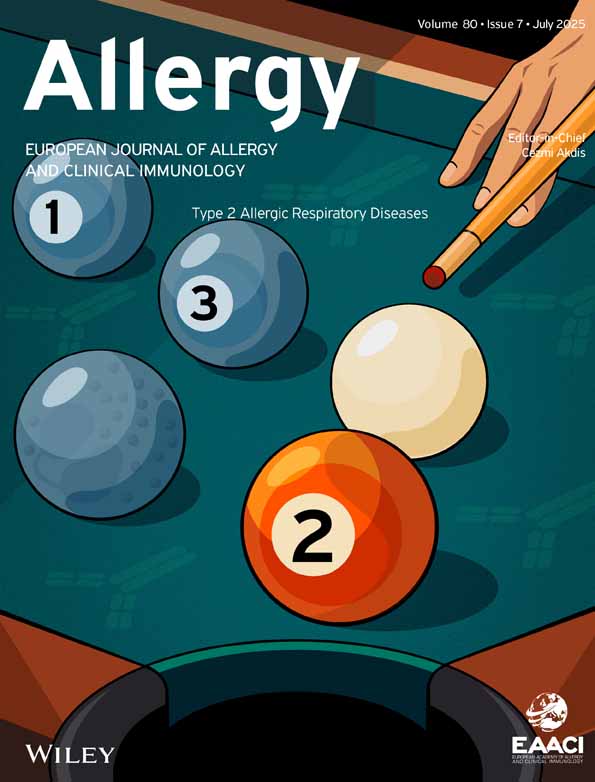Clinical significance of IgG subclass antibodies to wheat flour antigens in bakers
Abstract
We measured the IgG subclass antibody levels to wheat flour in 42 bakers and 20 controls with an enzyme immunoassay. The levels of total IgG, IgG1 IgG2 and IgG4 antibodies were significantly higher in the bakers than in the unexposed controls. The presence of anti-wheat flour IgG subclass antibodies in the bakers was correlated with various clinical variables including IgE levels, duration of asthmatic or rhinitis symptoms, skin prick test response, peripheral blood eosinophil levels, bronchial histamine reactivity and responses to nasal challenge with wheat flour. The IgG subclass antibody levels of the total cohort of bakers did not correlate with any of the measured clinical variables. However, among men specific IgG4 and IgG1 antibody levels correlated negatively with total IgF levels and duration of rhinitis, respectively. We conclude that IgG and IgG subclass levels to wheat flour in bakers reflect exposure, but that it is not related to any specific clinical situation. The exact pathogenetic role of these antibodies in the development of occupational asthma and rhinitis is thus not clear.




